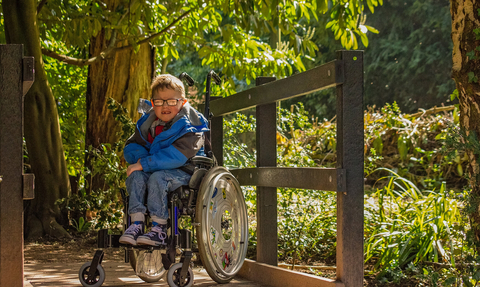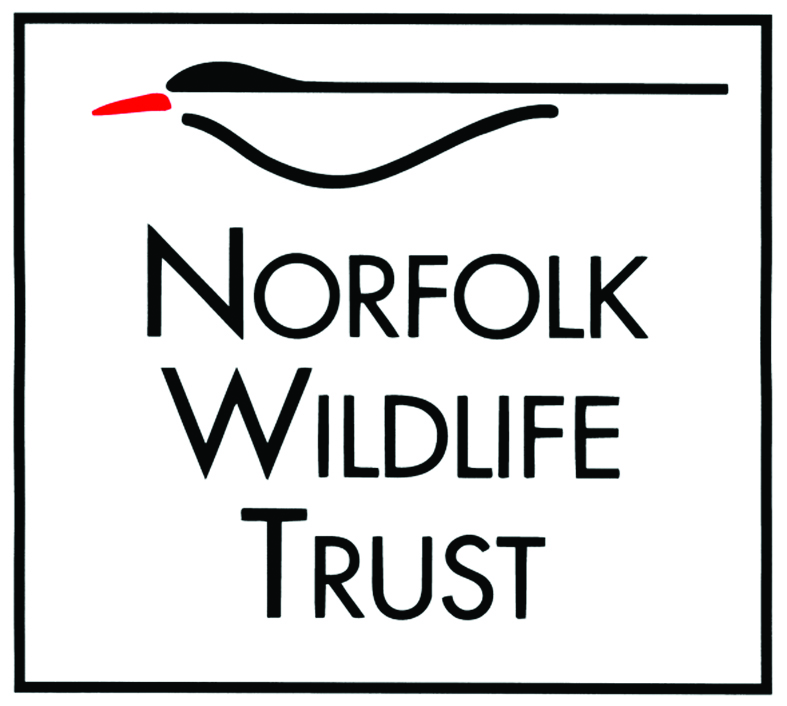
Boy using a wheelchair at a reserve (credit: Adrian Clarke)
Accessible nature reserves
We are committed to providing access to nature for everyone. Some of our sites already have accessible features and we are continually working to create new ways for more visitors to enjoy Norfolk’s wildest places.
Walk grading
Our sites allow for a range of walks that depend on their size and terrain. On each nature reserve page, we’ve given approximate gradings for walks across the site to help your visit:
Grade 1: Comfortable walking
Grade 2: Some rougher tracks
Grade 3: Tracks may be difficult
Accessibility across our nature reserve network
For all our sites, we advise you to call our main office ahead of your visit on 01603 625540 to obtain up-to-date access information.
Barton Broad and Marshes
From the car park, the reserve is accessible via a boardwalk, through the wet carr woodland to a viewing platform overlooking Barton Broad. The Broads Authority offers several disabled car parking spaces close to the boardwalk and in its main car park.
Cley and Salthouse Marshes
Visitor centre:
Disabled car parking spaces are provided with rough surface leading to the centre. There are push button doors, a lift to access the main centre, wheelchair accessible toilets, a hearing loop and a wheelchair available.
Reserve:
From the visitor centre car park, cross the road using the pedestrian crossing to enter the reserve. There is a hardened path made of compacted hoggin. Head left to reach a boardwalk, with passing areas, to the hides or turn right to reach Bishop's Hide. Continuing to the right it is possible to access East Bank, where there is a slope to assist with access. East Bank is raised, with a hardened path made from compacted hoggin, that stretches towards the beach overlooking the reserve.
Hickling Broad and Marshes
Visitor centre:
Disabled car parking spaces are provided with rough surface leading to the centre. Picnic benches adapted for wheelchair users and wheelchair accessible toilets are available at the visitor centre.
Reserve:
From the visitor centre there are hardened paths to Cadbury and Secker's hides and the view point on the Broad. Perch benches are located along the trails. Please note there is a requirement to open and close gates while following some of the paths. We can offer limited parking close to Bittern hide and our raptor roost watch point, both accessed via a ramp. Please call ahead for more details.
Pleasure Boat Inn:
There are dedicated and paved accessible parking spaces, level access into the pub as well as wheelchair accessible toilets.
Holme Dunes
Visitor centre:
Whilst there are no disabled car parking bays, a rough surface leads from the car park to a ramp into the centre, which
includes a patio area.
Reserve:
From the car park it is possible to access the Norfolk Coast Path via a hardened path, which runs adjacent to the reserve. For access information for the Norfolk Coast Path, please contact Norfolk County Council. The reserve has some sections of boardwalk and hardened paths leading to one wheelchair accessible wildlife hide.
Ranworth Broad and Marshes
Visitor centre:
The ground floor is accessible. The first floor is only accessible via a narrow spiral staircase. Limited disabled car parking spaces are available at the end of an accessible boardwalk which leads to the visitor centre (approx 300m).
Reserve:
From the main car park, a boardwalk and short section of road lead to the nature reserve which offers a further boardwalk winding through woodland and fen to a seating and viewing area by the Broad as well as access to the visitor centre. A wheelchair accessible wildlife hide sits part way down the boardwalk, overlooking a peaceful and wildlife rich area of the site.
Sweet Briar Marshes
The reserve can be accessed from a number of locations. The two main entrances to the reserve are located off Marriott’s Way, a footpath and cycle route. At each entrance there are lightweight easy-to-open field gates. The opening mechanism is suitable for wheelchair or mobility scooter users.
The main entrances are connected by an accessible path which follows a meandering route through the reserve. This 2.5m wide accessible path is 1.1km long and is made from crushed granite, which forms a hard, flat surface with a minimum camber. The main path has raised edges which offer a tapping/orientation board for mobility cane users - there are breaks in the edging where other paths connect. There are five seats available along this route, approximately 200m apart. Mown grass paths create loops to and from the main path. The paths are undulating and uneven and can become soft in wet weather. They might be closed if the ground conditions are unsuitable. Details of all access points and the nearest car parks are provided on the Sweet Briar Marshes nature reserve page.
Weeting Heath
From the car park, hardened paths made of compacted hoggin lead to accessible hides overlooking the reserve. Whilst there are no disabled car parking bays, a rough surface leads from the car park to wheelchair-accessible unisex toilets, which are made available for visitor's use when attending events at the nature reserve.
Other sites and activities
Other sites have varying access depending on the seasonal ground conditions.
East Wretham Heath
From the small car park, a gate then grassy path leads to an accessible hide overlooking Langmere.
Pigneys Wood
From the small car park, it is possible to access some hard surface tracks made from compact hoggin that provide a circular route around the woodland area. Other paths on the site are grassy and can be prone to being wet and muddy.
Boat trips
Whilst there is no access to wildlife boat trips for wheelchair users, we can assist those with limited mobility on and off the boats.
